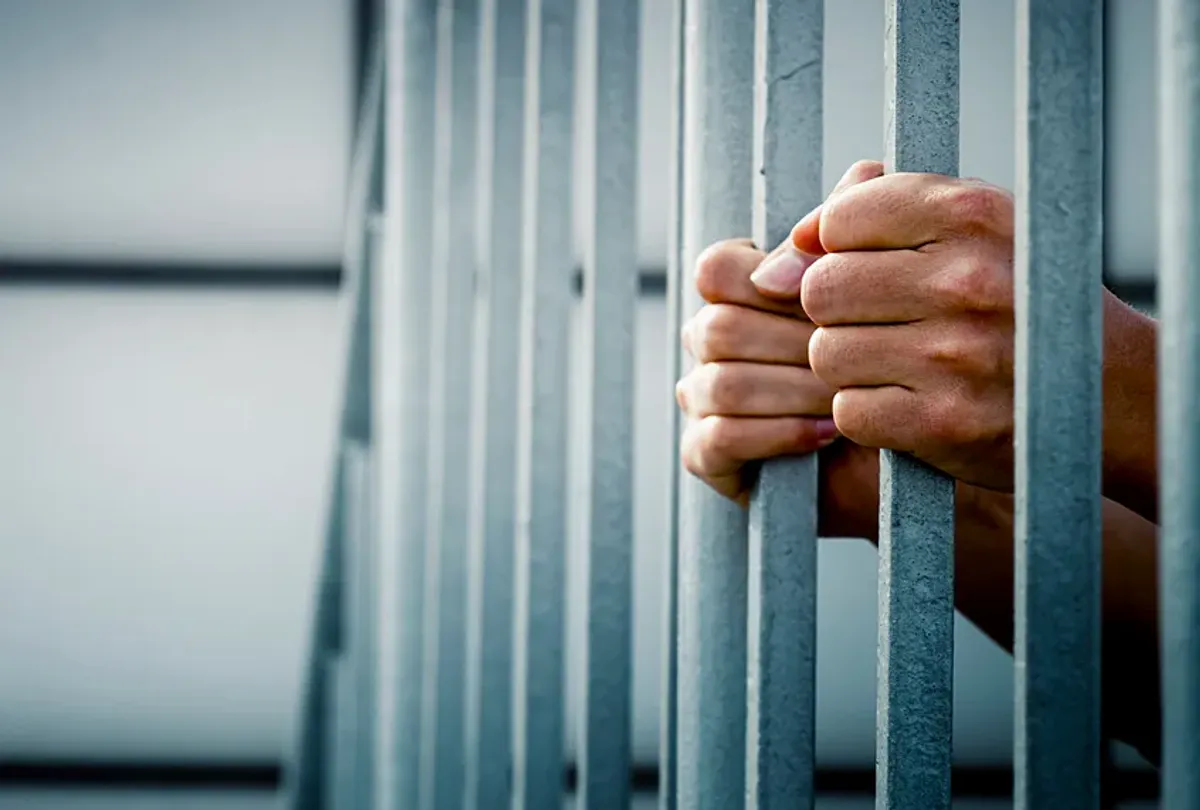
Prisons have long been a subject of intrigue and fascination, capturing the public’s imagination through stories of redemption, survival, and the complexities of human behavior. From the innovative rehabilitation programs that allow inmates to earn time off their sentences to the chilling realities of infamous prison disasters, the world of incarceration is filled with surprising facts that reveal much about society, justice, and the human spirit. In this blog, we will explore a collection of compelling and often shocking facts about prisons around the globe. These insights not only shed light on the conditions and experiences of inmates but also provoke thought about the broader implications of our justice systems. Join us as we delve into the lesser-known aspects of prison life that challenge our perceptions and encourage a deeper understanding of this critical societal institution.
Prison Population in the U.S. and China: The United States has a staggering prison population of over 2.2 million individuals, making it one of the countries with the highest incarceration rates in the world. In comparison, China has a prison population exceeding 1.65 million. This significant difference highlights variations in criminal justice policies, societal issues, and the legal frameworks of these two nations. The U.S. has often been criticized for its high incarceration rates, which are attributed to various factors, including mandatory sentencing laws and the war on drugs, leading to a complex debate about the effectiveness and morality of such policies.
World Prison Population Rate: According to United Nations estimates, the global prison population rate stands at 144 prisoners per 100,000 people. This statistic reflects the varying approaches to crime and punishment across different countries. While some nations prioritize rehabilitation and restorative justice, others may adopt more punitive measures, resulting in higher incarceration rates. The disparity in these rates can also indicate broader societal issues, such as poverty, inequality, and systemic discrimination that affect crime rates and, consequently, incarceration.
Increase in Female Prison Population: Since the year 2000, the number of women serving time in U.S. prisons has surged by approximately 50%, contrasting with an 18% increase in the male prison population. This significant rise in female incarceration can be attributed to various factors, including the increasing criminalization of drug-related offenses and the growing recognition of women’s involvement in crime. The increase also raises questions about the adequacy of support systems for women, particularly regarding mental health, substance abuse treatment, and the impact of incarceration on families and children.
Global Prison Population Growth: The world prison population has experienced nearly a 20% increase since 2000, reflecting shifts in criminal justice policies, societal attitudes towards crime, and the impact of globalization. This growth can be seen in various regions, with some countries implementing harsher sentencing laws or expanding their prison systems to accommodate rising crime rates. The increase in incarceration rates raises concerns about overcrowding, the effectiveness of rehabilitation programs, and the long-term implications for individuals and communities affected by mass incarceration.
Highest Prison Rates: The United States leads the world with the highest incarceration rate, at 724 prisoners per 100,000 residents. Following closely is Russia, with a rate of 581 per 100,000. These figures indicate a stark difference in how each country addresses crime and punishment. The high rates in the U.S. can be attributed to a combination of factors, including stringent drug laws, a focus on punitive measures, and socio-economic disparities that disproportionately affect marginalized communities. This phenomenon has sparked debates about criminal justice reform and the need for more equitable approaches to addressing crime.
U.S. Population and Prison Statistics: Although the United States comprises nearly 25% of the world’s population, it houses only about 5% of the global prison population. This statistic highlights the complexities of incarceration rates and suggests that the U.S. system may be more focused on punitive measures rather than rehabilitation. The discrepancy raises questions about the effectiveness of the American criminal justice system and its ability to address the root causes of crime, such as poverty, lack of education, and mental health issues.
Drug Possession Arrests: In the United States, over 1 million arrests occur each year for drug possession, which is four times greater than the number of arrests for drug sales. This statistic underscores the ongoing war on drugs and its impact on the criminal justice system. The disproportionate focus on possession rather than trafficking raises concerns about the effectiveness of these laws and their contribution to mass incarceration, particularly among marginalized communities. Critics argue that such policies often do not address the underlying issues of addiction and mental health, necessitating a reevaluation of drug-related laws.
Recidivism Rates: A mere 23% of released prisoners in the United States manage to stay out of prison, highlighting the challenges of reintegration into society. Factors contributing to high recidivism rates include lack of access to employment opportunities, unstable housing, and insufficient support systems for mental health and substance abuse treatment. This statistic emphasizes the need for comprehensive rehabilitation programs that address the root causes of criminal behavior and provide support for individuals transitioning back into their communities.
Racial Disparities in Incarceration: African Americans face incarceration rates that are over five times higher than those of white individuals, with some states reporting rates up to ten times higher. This stark disparity reflects systemic inequalities within the criminal justice system, including racial profiling, discriminatory sentencing practices, and socio-economic factors. The implications of these disparities are profound, affecting not only individuals but also families and communities, perpetuating cycles of poverty and disenfranchisement.
Cost of the U.S. Prison System: The United States prison system incurs an estimated annual cost of $80 billion. This staggering figure encompasses expenses related to incarceration, including housing, food, healthcare, and security for inmates. The financial burden of maintaining such a large prison population raises critical questions about resource allocation within the criminal justice system. Critics argue that these funds could be better invested in prevention programs, mental health services, and education initiatives that address the root causes of crime, potentially leading to more effective and humane outcomes.
Mortality Rates in Prisons: Each day, an average of 12 individuals die within the U.S. prison system, totaling about 4,400 deaths annually. The majority of these fatalities are health-related, with common causes including cancer and heart disease, particularly in state and federal prisons. In local jails, suicide is the leading cause of death. These alarming statistics highlight the urgent need for improved healthcare access and mental health support for incarcerated individuals. The high mortality rates also raise ethical concerns about the treatment of prisoners and the responsibility of the state to ensure their well-being.
Disproportionate Imprisonment of LGBTQI Individuals: Transgender adults and LGBTQI youth are disproportionately represented in the prison population, with an estimated 16% of transgender individuals having been incarcerated, compared to 2.7% of the general adult population. Among young people in detention, approximately 13-15% identify as LGBTQI. This disparity underscores the unique challenges faced by LGBTQI individuals within the criminal justice system, including discrimination, harassment, and inadequate access to appropriate healthcare. Addressing these issues is essential for fostering a more equitable and just society.
Stanford Prison Experiment: The Stanford Prison Experiment, conducted in 1971, is a notorious psychological study that explored the effects of perceived power and authority on behavior. In this experiment, college students were assigned roles as either prisoners or guards within a simulated prison environment. The study quickly spiraled out of control, revealing how situational factors could lead to abusive behavior and dehumanization. The findings have since sparked extensive discussions about ethics in psychological research, the impact of power dynamics, and the potential for systemic abuse within actual prison settings.
Risk of Death After Booking: Research indicates that the first 72 hours after a person is booked into jail is when they are at the highest risk of death. This critical period can be fraught with challenges, including withdrawal from substances, lack of medical care, and heightened stress or mental health crises. The implications of this statistic highlight the need for appropriate medical assessments and interventions during the intake process to mitigate risks and ensure the safety and well-being of newly incarcerated individuals.
Men’s Central Jail in Los Angeles: Men’s Central Jail in Los Angeles is recognized as the world’s largest jail system, housing over 22,000 inmates. Its sheer size poses significant challenges related to overcrowding, resource allocation, and the provision of adequate healthcare and rehabilitation services. The conditions within such large facilities can lead to increased tension and violence, making it difficult to maintain order and provide meaningful support to inmates. The scale of this facility raises questions about the effectiveness of the U.S. jail system and the need for reform.
Oklahoma’s Incarceration Rate: Oklahoma has recently surpassed Louisiana to become the “prison capital of the world,” with an incarceration rate of 1,079 individuals per 100,000 residents. This alarming statistic reflects the state’s stringent sentencing laws and policies that prioritize incarceration over rehabilitation. The high rate of imprisonment in Oklahoma has significant social implications, contributing to family disruption, economic strain, and community disinvestment. Advocates for reform argue for a reexamination of criminal justice policies to address the underlying issues driving such high incarceration rates.
Comparative Murder Rates and Incarceration: Despite having murder rates more than double that of the United States, countries such as El Salvador, Panama, Costa Rica, and Brazil maintain significantly lower incarceration rates. This discrepancy suggests that these nations may employ different approaches to crime prevention and justice, focusing on social programs and community-based interventions rather than punitive measures. The contrasting statistics prompt discussions about the effectiveness of various criminal justice systems and the potential benefits of adopting alternative strategies to address violence and crime.
Historical Punishments in Texas and Arkansas: In Texas, the practice of whipping as a punishment in prisons was permitted until 1941, while Arkansas allowed it until 1967. These historical practices reflect a time when corporal punishment was considered a legitimate form of discipline within the prison system. The eventual abolition of such practices indicates a shift towards more humane treatment of inmates and a growing recognition of the need for rehabilitation rather than punishment. The legacy of these practices raises ongoing discussions about the treatment of prisoners and the evolution of correctional philosophies.
Reading Program in Brazil: In Brazil, the prison system has implemented a unique rehabilitation program that allows inmates to reduce their sentences by engaging in educational activities, specifically reading books and writing reports about them. This initiative enables inmates to earn a reduction of up to 4 days for each book they read, with a maximum of 48 days off their sentence per year. This program aims to promote literacy and personal development among prisoners, encouraging them to engage with literature and reflect on their lives. By providing this opportunity, the Brazilian justice system seeks to facilitate reintegration into society upon release, as education can play a crucial role in reducing recidivism rates.
Ohio State Penitentiary Fire Disaster: One of the most tragic events in U.S. prison history occurred on April 21, 1930, at the Ohio State Penitentiary, where a catastrophic fire claimed the lives of 322 inmates and injured 150 others. The disaster unfolded when a fire broke out, and some guards, fearing for their safety, refused to unlock the cells to allow inmates to escape. In a desperate act of solidarity and bravery, many inmates overpowered the guards to rescue their fellow prisoners, highlighting the complex dynamics of fear, survival, and camaraderie in dire situations. This incident led to significant scrutiny of prison safety standards and the treatment of inmates during emergencies.
Indochinese Tiger Case: The last Indochinese tiger in China was tragically killed by a man who was subsequently sentenced to 12 years in prison for his actions. This case highlights the ongoing issues of wildlife trafficking and poaching, where individuals exploit endangered species for profit. The harsh penalty reflects the seriousness of the crime, as the Indochinese tiger is a critically endangered subspecies, with its population severely diminished due to habitat loss and illegal hunting. The sentencing serves as a reminder of the importance of protecting biodiversity and enforcing laws against wildlife crimes.
“The Hole” in Scientology: Within the Church of Scientology, there exists a controversial practice known as “The Hole,” where high-ranking executives are reportedly sent for punishment and rehabilitation. In this facility, individuals may endure extended periods of manual labor, humiliation, and solitary confinement, often for months or even years. Former members have drawn stark comparisons between “The Hole” and North Korean prison camps, describing the psychological and physical toll it takes on those confined. This practice has raised significant ethical concerns regarding the treatment of individuals within religious organizations and the potential for abuse of power.
Timothy Leary’s Prison Manipulation: When American psychologist Timothy Leary was incarcerated in 1971, he was uniquely positioned to manipulate the psychological evaluation process due to his involvement in designing the tests used on inmates. By strategically answering the questions, he was able to secure a gardening job, which provided him with a platform to plan his escape from prison. This incident not only underscores the complexities of the prison system but also illustrates how knowledge and intelligence can be used to navigate and sometimes exploit institutional structures, raising questions about the fairness of such systems.
Alcatraz Hot-Water Showers: Alcatraz, the infamous federal prison located on an island in San Francisco Bay, was notable for being the only federal facility to offer hot-water showers to its inmates. These showers were strategically installed to acclimate prisoners to hot water, making it nearly unbearable for them to attempt a swim to freedom in the frigid waters surrounding the island. The design of Alcatraz was such that escape was incredibly challenging, and the hot-water showers served as a psychological deterrent, reinforcing the idea that escape was not a viable option for inmates.
Suomenlinna Prison in Finland: The Suomenlinna Prison in Finland is unique in that it features only a yellow picket fence as its primary barrier to keep inmates from leaving. This unusual approach to prison design reflects Finland’s progressive views on rehabilitation and reintegration into society. The warden eventually had to lock the gate due to the frequent attempts by people trying to enter the prison, demonstrating the open and non-threatening environment of this facility. This model emphasizes trust and the belief that inmates can be responsible for their own actions, contrasting sharply with more traditional, restrictive prison systems.
Body Doubles in China: In China, a disturbing trend has emerged where wealthy individuals can hire body doubles to serve their prison sentences on their behalf. This practice raises significant ethical and legal questions about justice and equality within the legal system. It highlights the disparities between the wealthy and the less fortunate, where financial resources can be used to evade consequences for criminal behavior. Such actions undermine the integrity of the justice system and contribute to public disillusionment with legal accountability, as it perpetuates a cycle of privilege that allows the affluent to escape the repercussions of their actions.
Josef Mengele’s Infamous Experiments: Josef Mengele, a physician during World War II, became notorious for his inhumane experiments on inmates at Auschwitz concentration camp, particularly targeting twins, individuals with physical abnormalities, and other vulnerable populations. Mengele’s experiments were marked by extreme cruelty, including surgeries without anesthesia and exposure to deadly pathogens, all in the name of pseudoscientific research aimed at advancing Nazi ideology on race and genetics. His actions have left a lasting legacy of horror and ethical debates surrounding medical experimentation and human rights violations. After the war, Mengele evaded capture and lived in hiding for decades, which further complicates the historical narrative surrounding accountability for war crimes and the moral responsibilities of medical professionals.
Frequently Asked Questions about Prison:
1. What is the purpose of prison?
Prisons serve multiple purposes within the justice system. Primarily, they are designed to punish individuals who have been convicted of crimes, thereby serving as a deterrent to prevent others from committing similar offenses. Prisons also aim to rehabilitate offenders, providing them with programs and resources to address the underlying issues that may have contributed to their criminal behavior, such as substance abuse or lack of education. Additionally, prisons are meant to protect society by keeping dangerous individuals away from the general public. Ultimately, the effectiveness of prisons in achieving these goals can vary widely based on factors such as prison conditions, available programs, and the overall approach of the justice system.
2. How are prisons different from jails?
Prisons and jails serve different functions within the criminal justice system. Jails are typically local facilities that hold individuals who are awaiting trial or serving short sentences, usually less than one year. They often house a mix of individuals, including those charged with misdemeanors and those awaiting transfer to prison. In contrast, prisons are state or federal facilities designed for individuals convicted of more serious crimes and serving longer sentences, often over one year. Prisons are generally larger and provide more structured environments with programs aimed at rehabilitation, while jails may have fewer resources and programs available.
3. What is the process for entering prison?
The process for entering prison typically begins after an individual is convicted of a crime and sentenced by a judge. Following sentencing, the individual is usually taken into custody and processed at a local jail before being transferred to a state or federal prison. During this processing phase, personal information is collected, and the individual may undergo medical and psychological evaluations. Once assigned to a prison, the individual will be classified based on factors such as the nature of their crime, behavior, and risk level, which will determine their housing assignment and access to programs.
4. What are the living conditions like in prison?
Living conditions in prisons can vary significantly depending on the facility, its location, and the resources available. Generally, prisons are designed to be secure environments, with inmates housed in cells that may be shared with one or more individuals. Basic amenities typically include meals, access to healthcare, and opportunities for exercise. However, conditions can be harsh, with overcrowding, limited privacy, and sometimes inadequate healthcare or nutrition. Many prisons offer educational and vocational programs, but the availability and quality of these programs can differ widely. Overall, while some facilities prioritize rehabilitation and support, others may focus more on punishment, leading to challenging living conditions for inmates.
5. What types of programs are available to inmates?
Many prisons offer a variety of programs aimed at rehabilitation and personal development. Common programs include educational courses (such as GED preparation), vocational training (to help inmates acquire job skills), substance abuse treatment, and mental health counseling. Some facilities also provide recreational activities, religious services, and support groups. The goal of these programs is to equip inmates with the skills and support they need to reintegrate into society successfully upon their release. However, the availability and quality of programs can vary significantly from one prison to another.
6. Can inmates communicate with the outside world?
Yes, inmates typically have the ability to communicate with the outside world, although there are restrictions in place. Most prisons allow inmates to make phone calls, send and receive letters, and in some cases, access email services. Phone calls are often monitored, and there may be limitations on the duration and frequency of calls. Letters are also subject to inspection for contraband. Additionally, visitation rights vary by facility, with specific rules regarding who can visit, how often, and the duration of visits. Maintaining communication with family and friends is considered important for inmate rehabilitation and emotional support.
7. What rights do prisoners have?
Prisoners retain certain rights, although these rights can be limited compared to those of free citizens. Inmates have the right to humane treatment, access to healthcare, and protection from cruel and unusual punishment, as outlined by the Eighth Amendment of the U.S. Constitution. They also have the right to communicate with the outside world, practice their religion, and access legal representation. However, the enforcement of these rights can vary, and inmates often face challenges in asserting them. Advocacy groups work to ensure that prisoners’ rights are respected and that they are treated fairly within the justice system.









